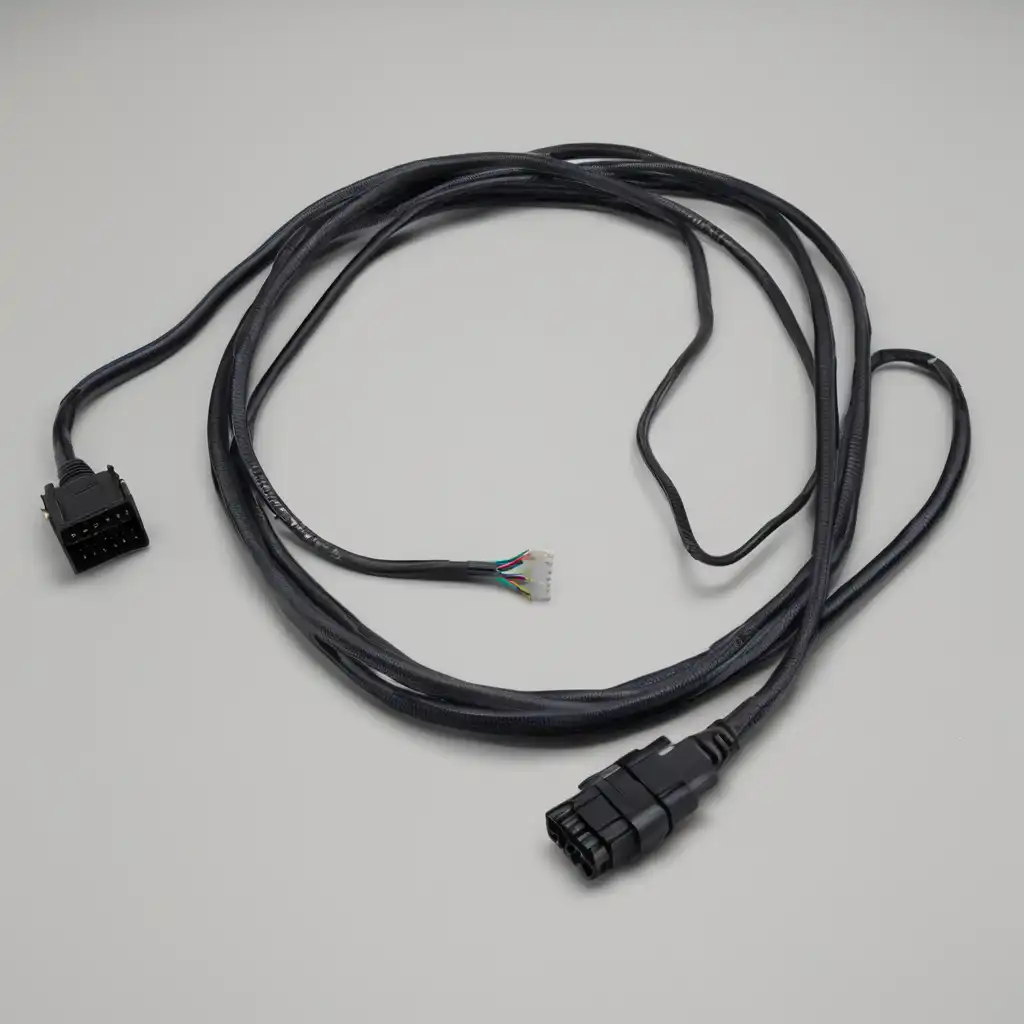Understanding the materials used in constructing cable harnesses is critical to understanding the complexities and processes involved in their manufacture. As a specialized cable harness manufacturer, we carefully select each component to ensure our products’ reliability, durability, and performance in many applications. The construction of a cable harness may seem simple at first glance-wires and cables are bundled and protected. However, the choice of materials and the precision of the assembly play a critical role in the functionality and longevity of the final product.
Conductor Materials:
The conductor is at the heart of every cable harness and is responsible for transmitting electrical signals or power. Copper is the most commonly used conductor material because of its excellent electrical conductivity and flexibility. In some applications where weight and cost are key factors, aluminum conductors can be used. Aluminum is a lighter, more cost-effective alternative, although less conductive than copper. Silver or nickel-plated conductors can enhance conductivity and resistance to environmental factors for specialized high-performance applications.
Insulation:
Insulation wraps around the conductor to protect against leakage and environmental challenges. The insulation choice depends on the application’s specific needs, including heat resistance, flexibility, and strength. Polyvinyl chloride(PVC)is widely used for its versatility and cost-effectiveness. However, for environments requiring higher temperature resistance, materials such as polyethylene(PE), polypropylene(PP), and polyethylene terephthalate(PET)are preferred. Polyimide or PTFE(Teflon) provides insulation that can withstand high temperatures and aggressive chemicals for extremely harsh conditions.

Protective coverings:
The outermost layer of a cable harness is critical to protecting the internal wires and cables from physical damage and environmental hazards. Materials selected for protective jacketing must strike the right balance between flexibility and durability. Commonly used materials include
PVC: Popular for its versatility and protective qualities.
Thermoplastic rubber(TPR)-offers excellent flexibility and can withstand a wide range of temperatures.
Polyurethane(PU) is known for its abrasion resistance and toughness and is ideal for harsh environments.
Shielding Materials
Electromagnetic Interference(EMI)and Radio Frequency Interference(RFI)can seriously affect a wire harness’s performance. To mitigate these effects, shielding materials such as aluminum, copper braid, or foil are incorporated into the design. These materials wrap around the conductors, reflecting or absorbing unwanted interference and ensuring signal integrity.
Connectors and Terminals
Connectors and terminals are critical for integrating wire harnesses into their applications. These components must be selected based on the intended use’s electrical requirements and environmental conditions. Common materials used in connectors and terminals include brass and copper alloys, and gold or silver plating is used for high-performance applications to enhance conductivity and corrosion resistance.
Brass and copper alloys are common materials used in connectors and terminals, and gold or silver plating is used for high-performance applications to enhance conductivity and corrosion resistance.
Protective Coatings and Conduits:
Cable harnesses often require external coverings or conduits for additional protection, especially when traveling through areas susceptible to abrasion, moisture, or chemicals. Materials such as braided sleeving(made of PET or nylon), spiral wrap, and corrugated loom tubing provide additional protection to shield the harness from physical and environmental challenges.
As a specialized wire harness manufacturer, we recognize that the success of our products depends not only on the quality of the individual materials but also on their synergistic effect. Each material is selected for its specific attributes to ensure that the finished harness can withstand the operational demands of its application. Whether transmitting power and data in industrial machinery, vehicles, or sophisticated electronics, the correct choice of material is critical.
Creating wire harnesses that meet the stringent requirements of modern electrical and electronic systems requires an in-depth understanding of materials science and engineering principles. By selecting the proper conductors, insulation, jacketing, shielding, connectors, and protective materials, manufacturers can customize wire harnesses to meet exact specifications. Our expertise as a specialized harness manufacturer allows us to design and manufacture harnesses that optimize performance, durability, and value, providing customers with solutions that meet their highest expectations.



